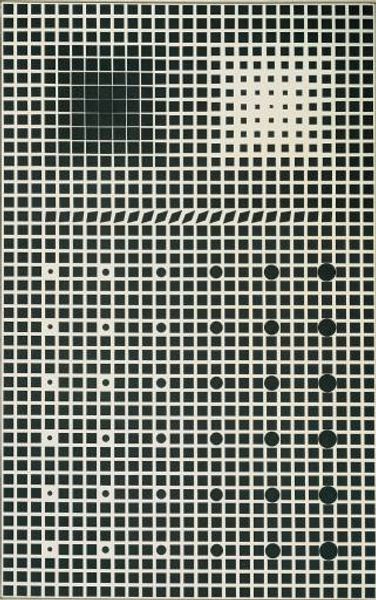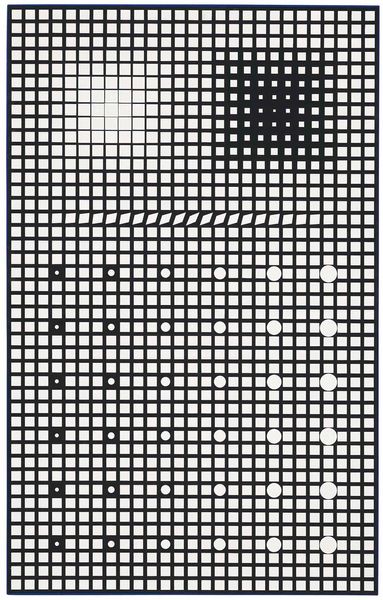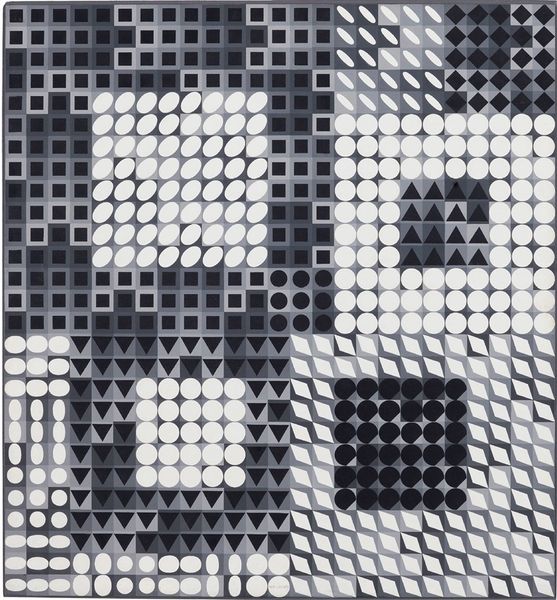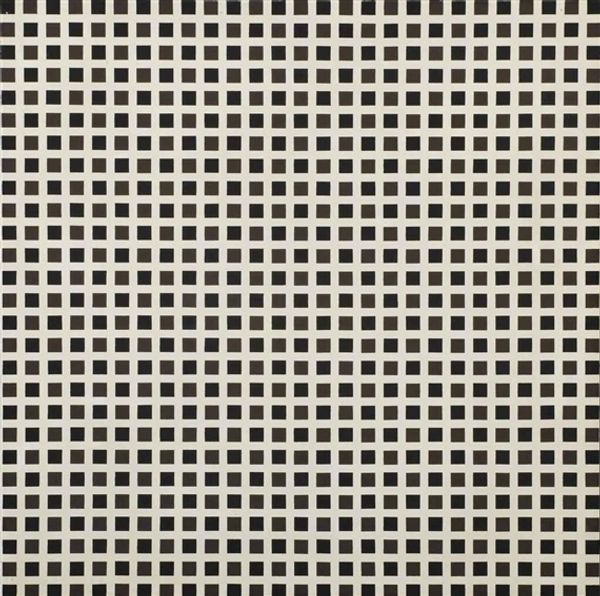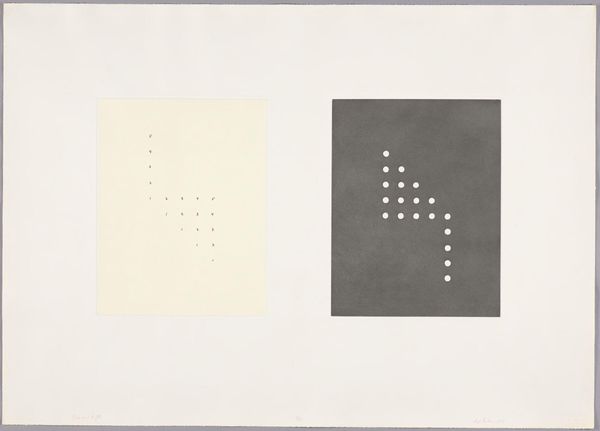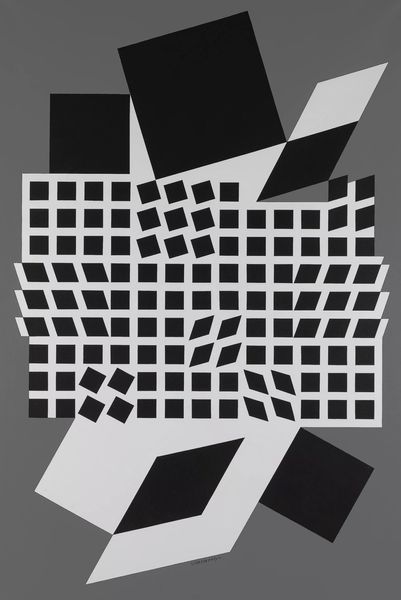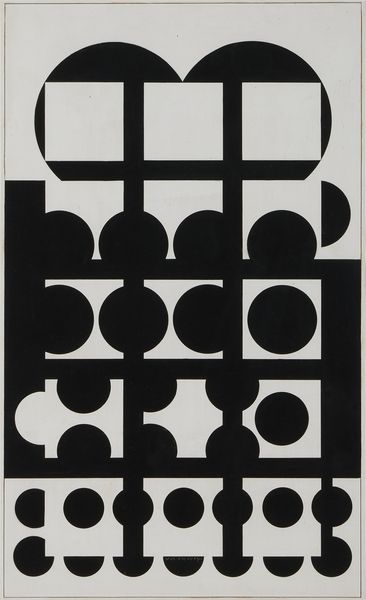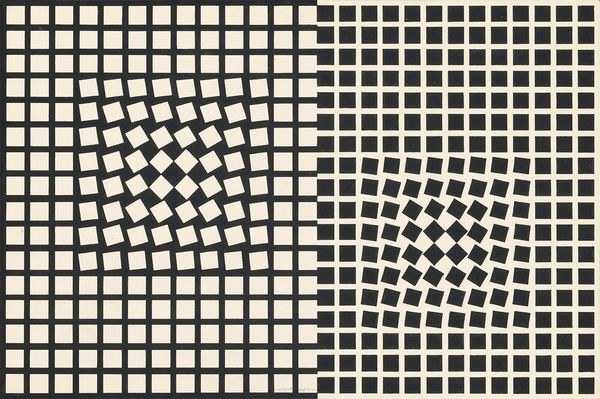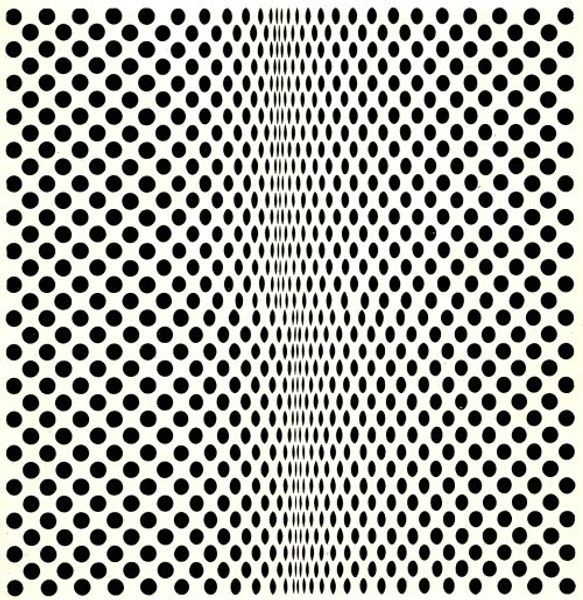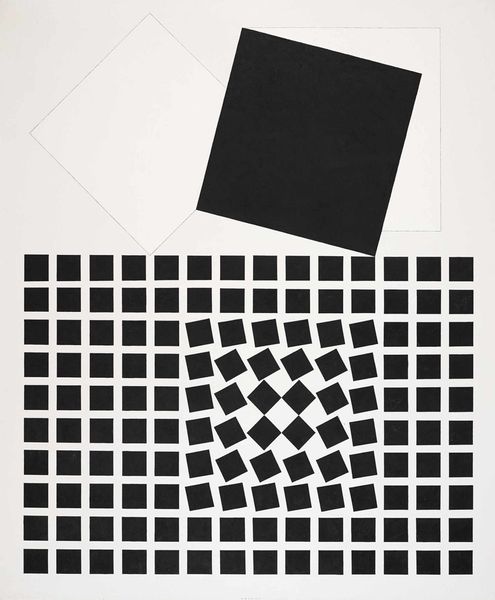
#
op-art
#
op art
#
geometric
#
abstraction
#
hard-edge-painting
Copyright: Modern Artists: Artvee
Victor Vasarely made this serigraph print, titled "Paar," sometime in the mid-20th century. It's a compelling example of Op Art, playing with visual perception through geometric abstraction. Vasarely, a Hungarian-French artist, was deeply interested in how art could engage with technology and mass production. Made in the post-war era, an optimism about technology and science pervaded society. In the 1960s, Op Art became incredibly popular, and Vasarely was one of its leading figures. "Paar" uses simple shapes - squares and circles - arranged in a grid to create a dynamic sense of movement. Look closely at the contrasting black and white, the way the forms shift and change. Is Vasarely commenting on the social structures of his own time? To understand Vasarely better, we can look at the institutional histories of art and technology in the 20th century. This artwork reminds us that art's meaning is contingent on its social and institutional context.
Comments
No comments
Be the first to comment and join the conversation on the ultimate creative platform.

